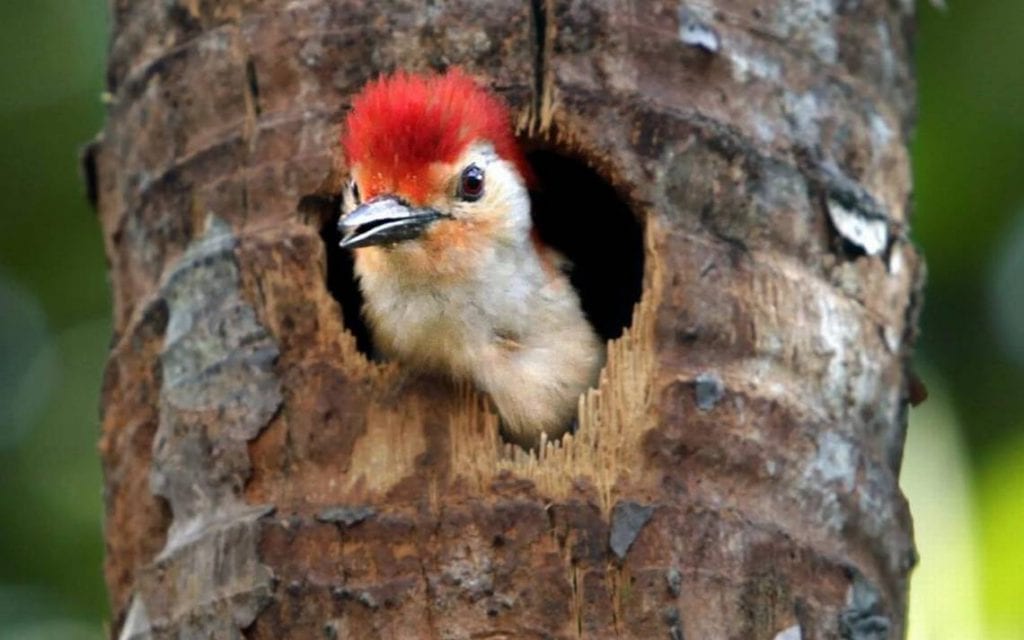
Some of the costliest damage to a home can come from pests that burrow into wood siding. These types of infestations destroy the effectiveness and aesthetic appearance of your siding. In addition, it can lead to deeper issues depending on the types of pests involved.
A Rogue’s Gallery of Siding Pests
Because your home’s siding serves as a protective shield from the elements, it is an essential and critical component of your home’s “envelope” – the physical barriers that separate the inside conditioned space from the outside unconditioned area. This envelope provides barriers against heat, cold, air, water, light, and noise.
And pests.
Here are some of the more notorious of the bunch that you should watch for, especially in California.
Termites
Termites cause more structural damage in the United States than any other insect. In fact, it is estimated that about 600,000 homes are damaged by termites every year and the subterranean species are the most destructive. While these are found throughout the United States, the Southeast and California have the heaviest infestations so suffer the most damage.
Subterranean termites are so named because they live underground and feed on wood surfaces buried below in the ground. If the wood happens to be the bottom edges of your wood siding, they will create hollow channels in your siding called “feeder tubes that destroy the structural integrity of the wood.
Unfortunately, these tubes are usually hidden under the surface of the siding, so they are hard to notice until it’s too late. Because termites can cause such serious damage to your home it’s usually best to bring on a professional pest management service to get rid of them.
Carpenter Ants
Although carpenter ants tend to infest a home’s insulation and inner walls, they can get into the siding over time as a colony grows. Because they are drawn to moist, rotting wood, having carpenter ants can also mean your home may have decaying walls.
One indication of an infestation by carpenter ants are the small piles of wood shavings produced as worker ants tunnel into the surface of the wood. These ants are small and black-colored and have wings during warmer weather. If you suspect carpenter ants, inspect your attic vents, around openings in your outer envelope and roof, and around pipes, chimneys, and vents. These are common spots for nests as is your home’s foundation.
You can deal with carpenter ants yourself by using insecticide baits for ant nests. However, if the problem is expansive, it never hurts to hire a professional who can seek out nests for you.
Powderpost Beetles
Termites are notoriously bad, but according to a post at The Diamond Certified blog,
“The biggest pest problem we currently have in the North Bay Area is the powderpost beetle, which is a wood-boring member of the Lyctinae family,” says Brandy Straub, owner of Redwood Empire Termite & Pest Control in Windsor. “Within the last five years, these beetles are the number one issue I’m finding in homes throughout Sonoma, Marin, Solano and Napa Counties.”
Powderpost beetles live inside wood, feeding on the starches in the wood fibers until they reach maturity. Afterwards, they tunnel out to the exterior of the wood, leaving powder-fine sawdust and tiny sets of holes in the wood. The most noticeable evidence of a beetle problem is the appearance of small exit holes that make the wood look like a sponge dusted with a fine powder that resembles flour.
Powderpost beetles are more common in new homes and in newly installed hardwood items such as window and door frames, and interior flooring. Powderpost beetles are unlikely to infect structural timbers as these tend to be made from softwood.
Make sure your home’s wood siding isn’t touching the soil. Because of landscaping projects and gradual soil accumulation, the ground surface level of your property can rise several inches over the years. When the dirt starts touching the siding, this causes your home to become more accessible to termites and beetles. You can prevent this from happening by checking your home’s siding and regrading the ground against your home, if necessary.
Woodpeckers
Although we tend to see them only in trees, woodpeckers will also target homes, especially those with wood siding. And, while they can sometimes simply be tapping to make noise, if they are looking for food it becomes a problem.
Woodpeckers find insects by prying or drilling into wood looking for beetles, larvae, and other insect pests. Depending on how much food they find, the damage from woodpeckers can be quite extensive, leaving behind dozens and even hundreds of shallow holes. Usually, a woodpecker will try to drill into corners where two pieces of siding are joined together.
And they are particularly fond of homes covered in cedar shakes or siding!
You can attach shiny materials or electronic deterrents to the side of your home or maybe set up a woodpecker feeder or birdhouse Giving them an alternative food source or nesting place can be effective. The Spruce website also has a great article on methods for dealing with destructive woodpeckers.
Rats and Mice
Rodents can often chew on wood siding in order to gain entrance to your home and make it theirs. Because they can climb easily, they can also gnaw holes through the soffit and fascia around your attic to get inside where they can then nest in the insulation or chew on electrical wires, which can create a fire hazard.
Usually the best approach to dealing with rodent infestations is call in the services of a professional pest control company. Like other house invading pests, rodents can do far more damage than simply chewing on your wood siding.
Keep Your Foundation and Siding Clear
According to an article at Modernize.com, it pays to consider your foundation.
“There’s a reason homes have foundations. Beyond just supporting the walls, good foundation works to insulate your home and keep it dry and pest-free, too. Your foundation protects your siding from excess moisture in the ground so it can keep doing its job, but over time, erosion and the effects of weather can cause soil to build up against your walls. Pests mostly come from below, so if your wood siding is flush against the ground, there’s a greater chance for damage from moisture and the resulting insect infestations. If soil, overgrowth, or mulch have completely covered your foundation, you’ll need to dig yourself out to avoid future problems.”
The article goes on to advise against stacking firewood against the side of your home as this creates an opportunity for pests such as wood-boring insects living in unseasoned wood to get into your siding. They suggest moving firewood and similar materials a few feet away from your home to avoid the risk of pest problems in your siding.
Pest control is an often overlooked issue for homeowners in California. Contact 3 Generations Improvements today if you need any help or advice.

